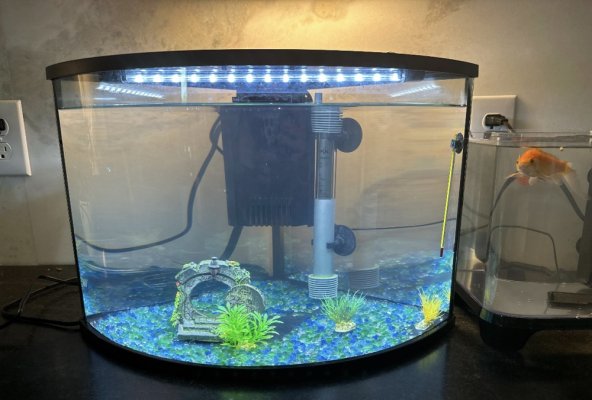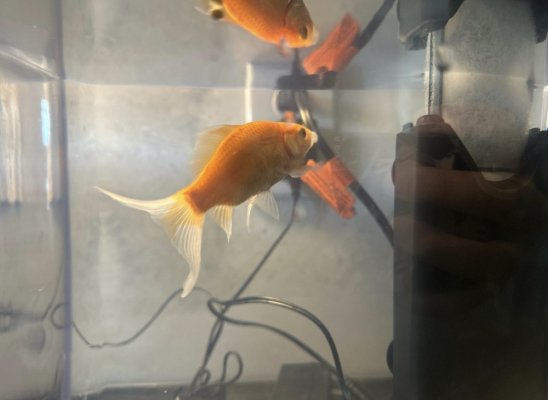MollyWonderland
Aquarium Advice Newbie
- Joined
- Jul 8, 2023
- Messages
- 2
Okay so quick BG: I got my goldfish at a carnival a year ago and I had no idea how to take care of him. The carnival staff tried to sell me a .75 gallon “tank” for him and a packet of food for like $25 which seemed insane to me so I went to my local pet store and they told me I just needed a 3 gallon tank for him so that’s what I got. He lived in that tank for about 11 months as I genuinely didn’t know better (and with another goldfish too for 6 months before the other one passed away). Roughly 2 months ago I FINALLY discovered that he actually needs a bigger tank so while I’m saving up for a bigger tank set up my mom got him a 7 gallon tank that he’s been in for the past month and a half. He has a fully functioning heater, filter, and lighting system in his 7 gallon tank.
Problem:
Yesterday he got ammonia poisoning and I did a 60% water change in his tank (with preconditioned water from the aquarium store), changed out his filter cartridge, added 2 drops of accuclear, algaefix, stress coat+, and ammolock each and after a few hours he perked up a bit but for the most part nothing changed. He was still paralyzing every few hours for about 2 minutes at a time and started swimming upside down. Once I saw this, last night, I tried a full Hail Mary and put 90% of the preconditioned water and 10% of his tank water into his 3 gallon tank, set the old filter up in it and put him in there. And lucky for me he not only lived but is acting completely normal again (he’s even trying to beg for food again every time I walk by haha)
Questions:
So I’ve done so much research about tank cycling in the past 15 hours as another redditor told me how important it is to do that. Even after all that research I still feel completely lost since all of the explanations that I’ve found are for new tank set up but he’s already been living in this tank for a month and a half already so would it already have the heathy bacteria it needs? I honestly am just at a loss since I can’t figure out how to make his 7 gallon tank habitable again without killing him. Especially since the 3 gallon tank is supposed to be a temporary solution. Any advice or help would be so so so appreciated I really want what’s best for my fish and am willing do to anything. I’m going to go get an air pump for his tank since a lot of suggestions said to do that but I’m completely hopeless on where to start.
Problem:
Yesterday he got ammonia poisoning and I did a 60% water change in his tank (with preconditioned water from the aquarium store), changed out his filter cartridge, added 2 drops of accuclear, algaefix, stress coat+, and ammolock each and after a few hours he perked up a bit but for the most part nothing changed. He was still paralyzing every few hours for about 2 minutes at a time and started swimming upside down. Once I saw this, last night, I tried a full Hail Mary and put 90% of the preconditioned water and 10% of his tank water into his 3 gallon tank, set the old filter up in it and put him in there. And lucky for me he not only lived but is acting completely normal again (he’s even trying to beg for food again every time I walk by haha)
Questions:
So I’ve done so much research about tank cycling in the past 15 hours as another redditor told me how important it is to do that. Even after all that research I still feel completely lost since all of the explanations that I’ve found are for new tank set up but he’s already been living in this tank for a month and a half already so would it already have the heathy bacteria it needs? I honestly am just at a loss since I can’t figure out how to make his 7 gallon tank habitable again without killing him. Especially since the 3 gallon tank is supposed to be a temporary solution. Any advice or help would be so so so appreciated I really want what’s best for my fish and am willing do to anything. I’m going to go get an air pump for his tank since a lot of suggestions said to do that but I’m completely hopeless on where to start.


